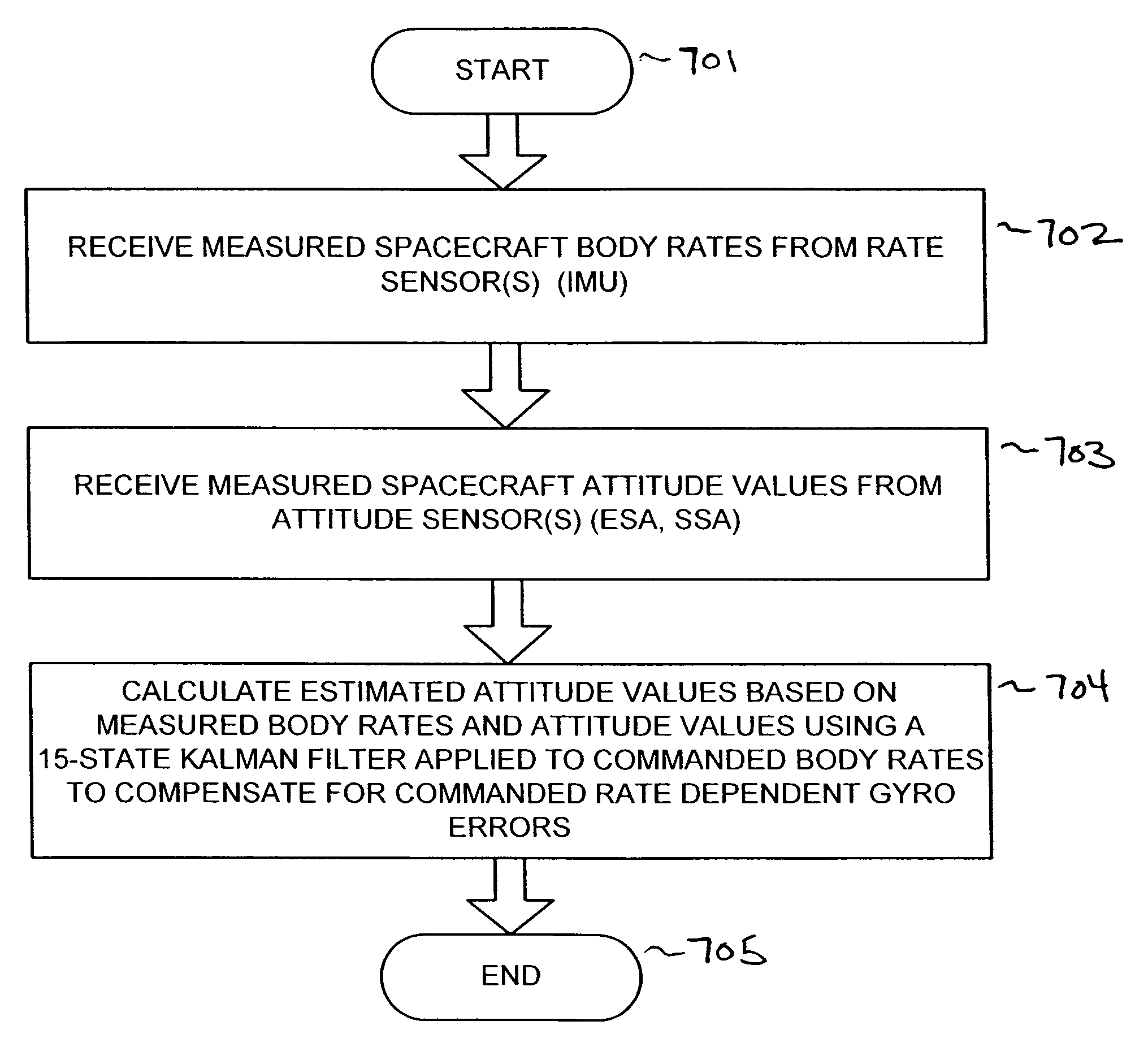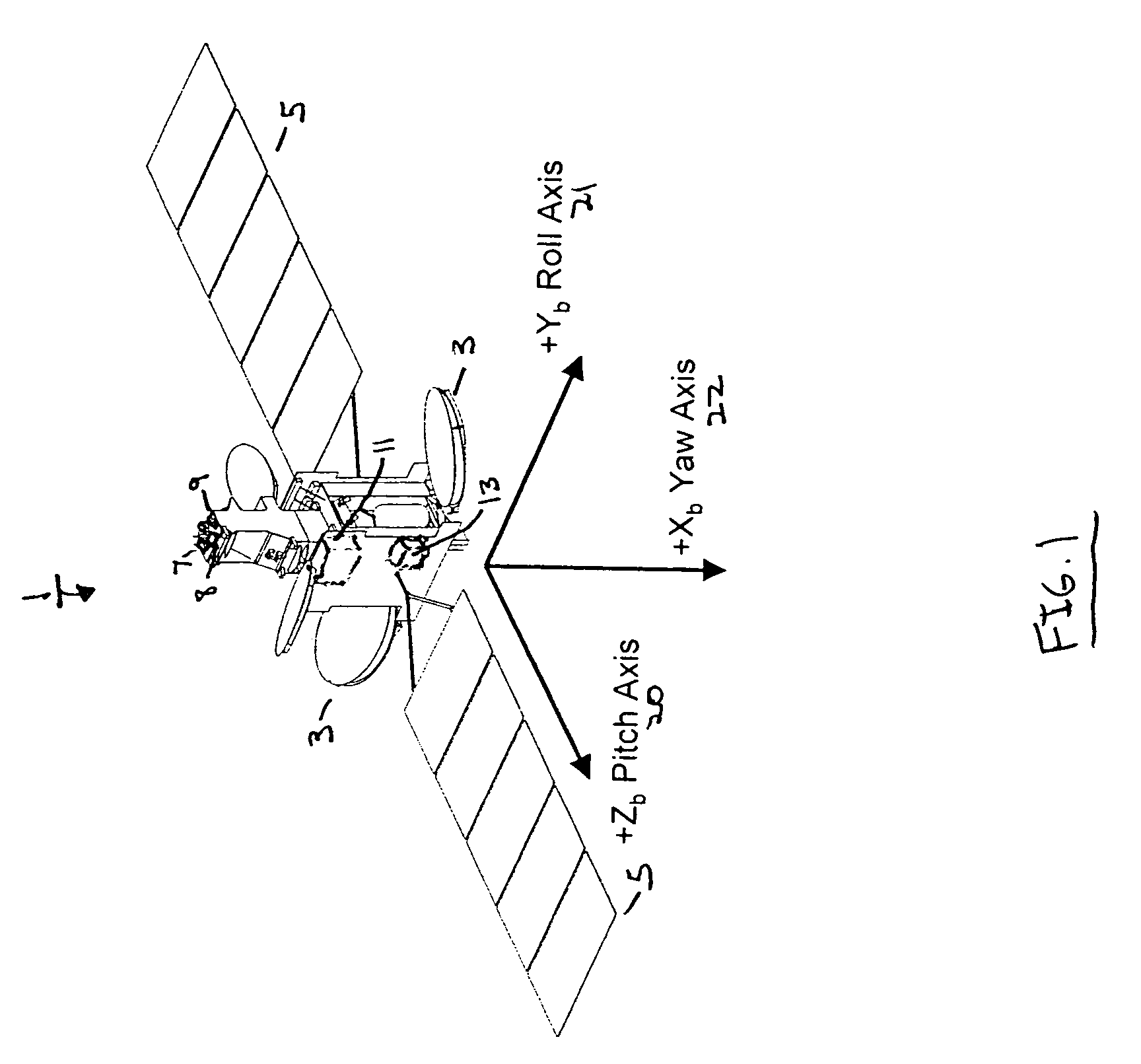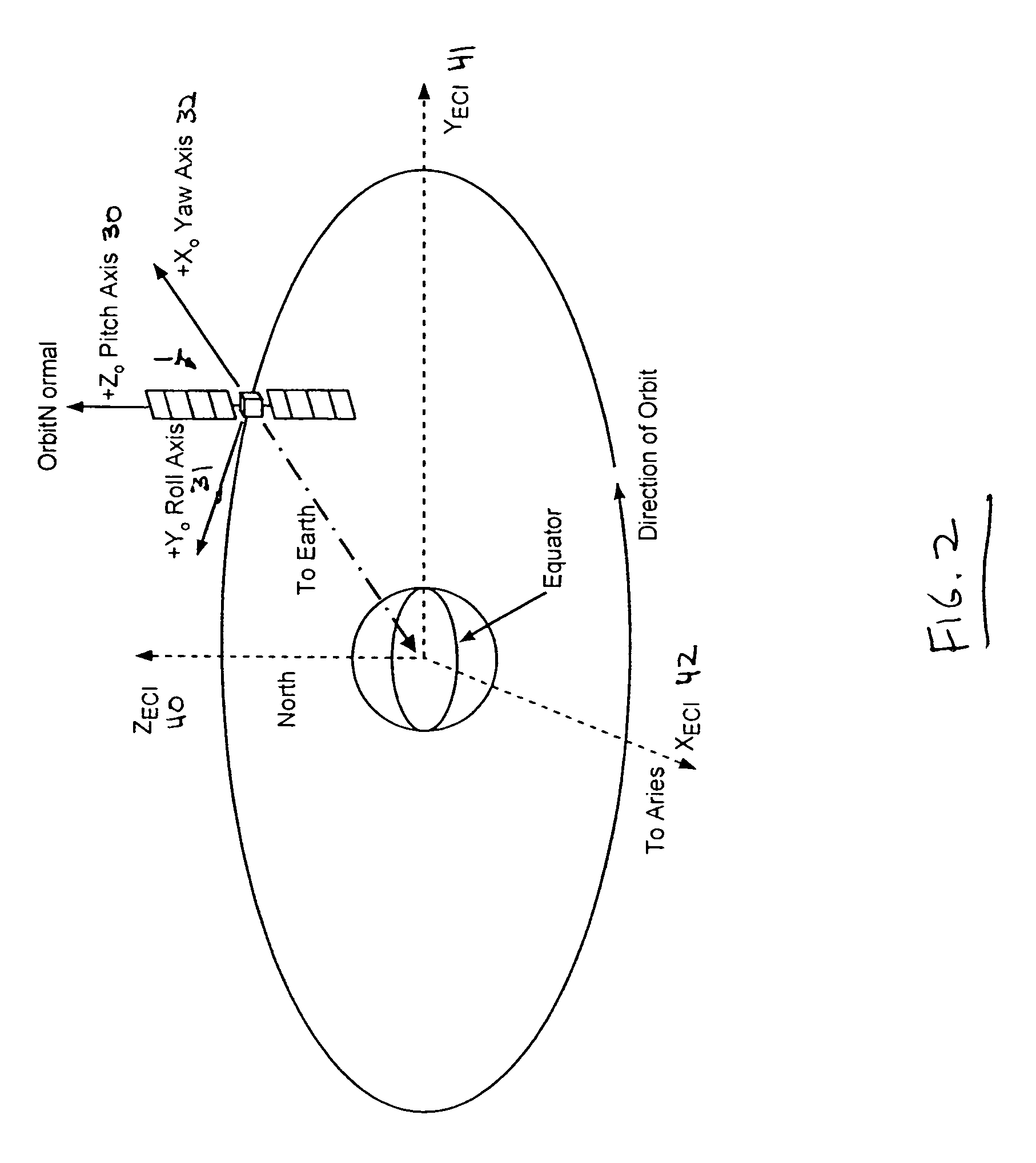Attitude determination system for yaw-steering spacecraft
a technology for determining system and spacecraft, which is applied in vehicle position/course/altitude control, process and machine control, instruments, etc., can solve the problems of significant degraded antenna-pointing performance, corrupted attitude determination solution, and approximate factor ten decrement in pointing accuracy, so as to achieve accurate pointing of spacecraft and accurate estimated attitude values
- Summary
- Abstract
- Description
- Claims
- Application Information
AI Technical Summary
Benefits of technology
Problems solved by technology
Method used
Image
Examples
Embodiment Construction
[0024]The present invention addresses the limitations of prior-art systems with an improved attitude determination system applicable to spacecraft that implement a highly-inclined SNP orbit profile. The invention observes the effects of the gyro scale factor and misalignment uncertainties during an orbit of the SNP profile, and actively estimates the gyro scale factor and misalignment uncertainties by incorporating nine additional rate-based bias states into a Kalman filter formulation. By incorporating these auxiliary states into the Kalman filter, the effect of gyro scale factor and misalignment errors are automatically removed, without the need for calibration maneuvers and their associated mission down time.
[0025]As mentioned above, the present invention uses an improved Kalman filter that incorporates additional rate-based bias states to accurately estimate the attitude of a yaw-steering spacecraft in which the spacecraft rotates about the yaw axis during the orbit, thereby cau...
PUM
 Login to View More
Login to View More Abstract
Description
Claims
Application Information
 Login to View More
Login to View More - R&D
- Intellectual Property
- Life Sciences
- Materials
- Tech Scout
- Unparalleled Data Quality
- Higher Quality Content
- 60% Fewer Hallucinations
Browse by: Latest US Patents, China's latest patents, Technical Efficacy Thesaurus, Application Domain, Technology Topic, Popular Technical Reports.
© 2025 PatSnap. All rights reserved.Legal|Privacy policy|Modern Slavery Act Transparency Statement|Sitemap|About US| Contact US: help@patsnap.com



